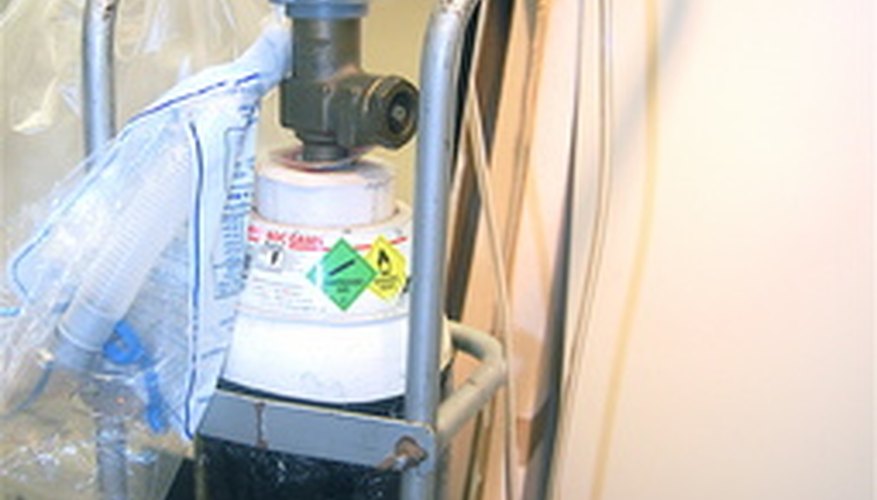Every cell in the body requires oxygen to sustain life. When we breathe, carbon dioxide is expelled from the body, and oxygen is breathed in from the air, passing into the lungs and entering the bloodstream to be carried around the body.
Methods of Delivering Oxygen
There are many circumstances in which oxygen may be required to raise blood oxygen readings which have dropped below the normal level of 95 to 100.
In most circumstances, oxygen is delivered at 21 per cent, the same concentration as in the air around us, and it is usually delivered by a nasal catheter or through a standard oxygen mask.
Standard Oxygen Masks and Rebreather Bag
The standard oxygen mask has side vents which allow room air to enter the mask and exhaled carbon dioxide to escape from the mask.
In a rebreather face mask, these vents have one-way discs which prevent room air entering and allow only two-thirds of expired breath to escape from the mask. One third of the expired breath, high in carbon dioxide, is retained in the mask and breathed in again by the patient.
The Chemistry of Breathing.
The body works to maintain constant blood oxygen levels. In healthy people, breathing is stimulated by the need to get rid of carbon dioxide rather than the need to breathe in oxygen. Chemical receptors identify when carbon dioxide levels are raised and respond by making the body breathe out carbon dioxide and breathe in air through the lungs.
- The body works to maintain constant blood oxygen levels.
- In healthy people, breathing is stimulated by the need to get rid of carbon dioxide rather than the need to breathe in oxygen.
Because their lungs are less efficient, people with chronic respiratory diseases such as chronic bronchitis and emphysema are accustomed to higher levels of carbon dioxide in their bodies. Rather than raised carbon dioxide these individuals rely upon lowered oxygen levels to stimulate their breathing.
Danger of Oxygen Therapy in Chronic Lung Disease
Because of their reliance upon lowered oxygen levels to stimulate breathing, there is inherent danger in giving too much oxygen to people with chronic lung disease .
Their chemical receptors will sense high body oxygen levels, so there is no stimulus to make these individuals breathe. This causes an even greater build up of carbon dioxide trapped in the body, and they stop breathing because their respiratory stimulus has gone.
The Rebreather Mask in Chronic Lung Disease
The rebreather face mask is a method through which the respiratory stimulus can be maintained in people with chronic lung disease.
Because of the one way valves, they are breathing back in some of the carbon dioxide they just breathed out. This maintains the higher levels of carbon dioxide to which their body is accustomed and their respiratory stimulus is retained.
Summary
Use of the rebreather face mask enables safer delivery of oxygen to people with chronic obstructive pulmonary disease. The mask delivers exhaled carbon dioxide as well as oxygen, maintaining the breathing stimulus which would cease if high levels of oxygen were delivered.
